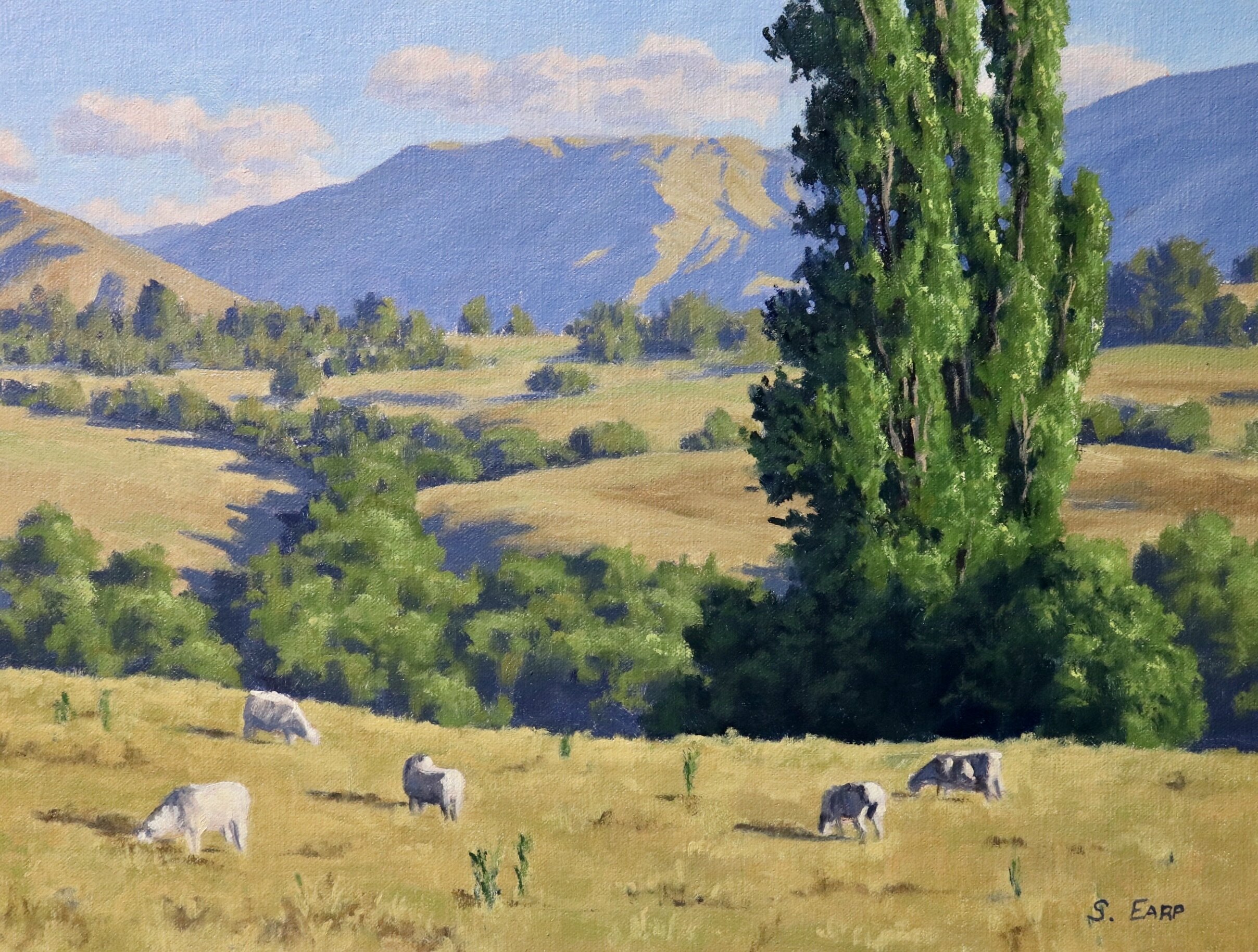Discovering All Concerning Oil Paintings: An Overview to Recognizing Their Beauty and Value
Oil paintings have actually mesmerized target markets for centuries, providing a glance right into the creative mastery of different eras. Their rich background is linked with ingenious techniques and extensive psychological expression. Understanding the products and techniques behind these artworks can improve gratitude. Furthermore, the market for oil paints provides opportunities for collection agencies and financiers alike. As one explores this fascinating globe, the concern arises: what makes an oil paint genuinely beneficial?
The Background of Oil Paint: A Trip With Time
Although oil paint has origins that date back to old times, it really flourished throughout the Renaissance, when artists found its flexibility and abundant color capacity. Early examples can be mapped to the 7th century, with strategies progressing notably throughout societies. The medium came to be noticeable in Northern Europe in the 15th century, especially through the works of artists like Jan van Eyck, who spearheaded its use for detailed realism and lively hues. This period marked a departure from tempera paints, permitting for better deepness and texture. As oil paint spread, it affected countless artists, leading to work of arts by renowned figures such as Leonardo da Vinci and Rembrandt. The medium's tradition proceeds, forming the art world well into contemporary times.
Recognizing Oil Paints: Products and Techniques
As artists discover the world of oil paints, they run into a varied range of products and strategies that specify this medium. The primary elements of oil paint consist of pigments, which provide color, and drying oils, such as linseed, that bind the pigments and assist in application. Numerous ingredients can change the paint's texture and drying time, enhancing adaptability. Strategies like glazing, where clear layers are developed, and impasto, which involves using thick paint, enable for various aesthetic impacts. In addition, the usage of brushes, palette knives, and even fingers can create unique textures and finishes. Understanding these methods and products makes it possible for artists to fully share their creativity and attain the wanted effect in their art work.
The Function of Color in Oil Paintings
Color plays a critical function in oil paintings, influencing both aesthetic charm and emotional vibration. Comprehending color concept fundamentals, consisting of the partnerships between colors, can improve a musician's capability to convey state of mind and environment. Additionally, understanding color blending methods permits better depth and splendor in a painting's palette.

Color Theory Basics
Understanding shade theory is important for musicians functioning with oil paints, as it forms the structure for producing unified and visually engaging compositions. Shade concept includes the study of exactly how colors connect, the color wheel, and the connections between key, additional, and tertiary shades. Artists make use of complementary shades to enhance contrasts and develop prime focus, while similar shades advertise unity and cohesiveness within an item. Furthermore, the concepts of cozy and amazing colors affect the understanding of deepness and space in a paint. Understanding these concepts allows artists to adjust color successfully, guiding the customer's eye and communicating their designated message. Mastery of shade concept ultimately improves a musician's ability to communicate feelings and ideas with their job.
Emotional Impact of Shade
The psychological influence of color in oil paintings plays a crucial function in exactly how visitors perceive and link with artwork. Colors evoke particular sensations and state of minds, influencing the viewer's emotion. For circumstances, cozy shades like oranges and reds can create a sense of heat and energy, while trendy tones such as blues and environment-friendlies typically stimulate calmness or introspection. Artists tactically pick shade palettes to improve narrative components, directing the audience's psychological journey. The saturation and comparison of shades additionally enhance these effects, drawing focus and developing focus. Inevitably, the interaction of colors in oil paintings not only improves their aesthetic allure yet also serves as an effective medium for emotional expression, enhancing the viewer's experience and interpretation.
Color Combining Techniques
While several facets of oil paint add to the general composition, understanding shade blending methods is essential for achieving desired effects and deepness. Shade mixing can be approached through various approaches, including the additive and subtractive processes. Additive blending involves combining shades of light, while subtractive mixing depends on pigments, where colors mix to produce new tones. Artists frequently make use of a minimal combination to create unified works, understanding the connections in between key, additional, and tertiary shades. Methods such as glazing and scumbling further enhance depth and luminance. By masterfully blending shades, an artist can evoke feelings, develop focal factors, and attain a sense of realistic look, ultimately elevating the painting's emotional and visual effect.
Famous Oil Painters and Their Iconic Functions

Famous for their mastery of shade and technique, oil painters have actually created some of the most renowned art work in background. Renowned artists like Vincent van Gogh captivated audiences with his emotive brushwork in "Starry Night," while Claude Monet's "Impression, Dawn" laid the foundation for Impressionism. Leonardo da Vinci's "Mona Lisa" stays a long-lasting sign of creative brilliant, showcasing his ability in catching human expression. On the other hand, Rembrandt's "The Evening Watch" illustrates his innovative usage of light and shadow. Various other remarkable numbers consist of Pablo Picasso, who reinvented contemporary art with his strong experimentation in works like "Les Demoiselles d'Avignon," and Georgia O'Keeffe, whose vibrant representations of landscapes and flowers helped specify American innovation. Each artist's distinct style contributed considerably to the oil painting landscape.
How to Evaluate the High Quality of an Oil Painting
Examining the top quality of an oil paint involves a mindful evaluation of workmanship methods, in addition to an analysis of color and structure. Observing brushwork, layering, and the application of paint can expose the musician's ability degree. In addition, the interaction of shades and the general plan of aspects contribute considerably to the painting's visual worth.
Analyzing Craftsmanship Techniques
A meticulous evaluation of craftsmanship techniques is important for determining the top quality of an oil painting. Evaluators need to first check out the application of paint; thick, textured brushstrokes might suggest an experienced hand, while extremely uniform applications could suggest an absence of depth. oil paintings for sale. The layering method is additionally important; the existence of glazes and varied density can enhance brightness and intricacy. Additionally, the top quality of the materials utilized, such as the canvas and pigments, plays a significant function in durability and general visual. Attention to detail in components like edges and shifts in between shades shows the artist's dedication to their craft. Eventually, these strategies add to the paint's psychological influence and market value, acting as indications of the musician's skill and intent
Assessing Color and Make-up
While assessing the top quality of an oil paint, one have to concentrate on the interplay click here of shade and composition, as these elements are essential to the artwork's general influence. Shade selections can develop and stimulate emotions mood; as a result, the musician's scheme need to be analyzed for harmony and contrast. A healthy make-up routes the visitor's eye and creates a sense of unity. Musicians usually use techniques like the rule of thirds or leading lines to enhance visual interest. In addition, the usage of light and darkness can include deepness, enhancing the three-dimensionality of the painting. Inevitably, an effective oil painting marries color and structure, involving the audience and welcoming a much deeper appreciation of the artist's vision and method.
Taking care of and Preserving Oil Paintings
Proper treatment and preservation of oil paintings is necessary for preserving their stability and long life. To protect these art work, it is vital to present them far from direct sunlight, which can create fading and staining. Preserving a stable setting with regulated temperature level and humidity further help in preventing damages. Cleaning up should be done delicately utilizing a soft, dry towel, preventing any kind of extreme chemicals that might harm the paint or varnish. Routine evaluations for signs of deterioration, such as flaking or splitting, are a good idea. When delivering or keeping oil paints, proper padding and framework are essential to prevent physical injury. Ultimately, thorough treatment adds to the visual allure and value of oil paintings gradually.
The Market for Oil Paints: Collecting and Spending
Understanding the market characteristics for oil paints is necessary for investors and collectors alike. The value of these artworks is affected by different elements, consisting of the musician's credibility, historic value, and present patterns. Collectors usually seek pieces that reverberate directly while considering potential recognition in worth. Galleries and auctions act as main places for trading, with rates fluctuating based on demand and rarity. Buying oil paints requires study right into the marketplace, along with an understanding of authenticity and provenance. Additionally, emerging artists may provide chances for considerable returns, while developed names can command high rates. In general, a calculated strategy to accumulating can generate both visual satisfaction and economic incentives.

Frequently Asked Concerns
What Are the Ecological Effects of Oil Paint Materials?
The ecological effects of oil paint products include the launch of volatile natural substances (VOCs), hazardous waste generation, and resource extraction for pigments. These aspects add to air pollution and ecological degradation, raising issues amongst eco conscious artists and customers.
How Do Various Canvases Impact Oil Paint Outcomes?
Various canvases affect oil paint results substantially. Surface, texture, and absorbency top quality can alter paint application, drying out times, and shade vibrancy. Artists frequently select particular canvases to achieve desired results and boost their creative expression.
Can Oil Paintings Be Brought Back if Damaged?
Oil paintings can undoubtedly be brought back if damaged. Professional conservators use numerous strategies to fix splits, clean surface areas, and address discoloration, making certain that the art work preserves its original beauty and worth for future generations.
What Are the Indications of an Original Oil Paint?
The indications of an original oil paint include visible brush strokes, texture variants, and an unequal canvas weave (oil paintings for sale). Furthermore, authenticity might be verified with provenance, signatures, and the visibility of a varnish layer distinct to oil tools
Exactly How Has Technology Influenced Modern Oil Paint Techniques?
Innovation has substantially affected modern oil paint methods by introducing electronic tools for planning, enhanced products for structure and long life, and on the internet platforms for selling and sharing art, therefore expanding musicians' creative possibilities and target market get to. Oil paint has origins that date back to ancient times, it genuinely grew throughout the Renaissance, when musicians found its adaptability and rich shade possibility. The psychological influence of shade in oil paintings plays an essential function in just how visitors connect and perceive with art work. While many aspects of oil paint contribute to the overall composition, grasping color mixing techniques is vital for achieving wanted results and deepness. Evaluating the top quality of an oil painting includes a careful analysis of workmanship methods, as well as an evaluation of color and make-up. While evaluating the quality of an oil painting, one need to concentrate on the interplay of shade and composition, as these components are basic to the art work's general effect.